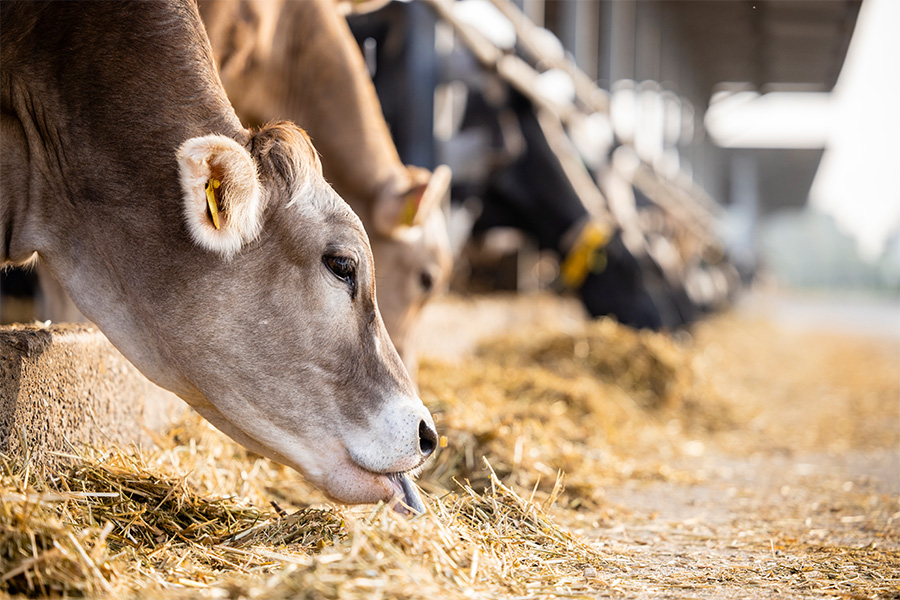-
 Sunflowers can be an important addition to the home garden due to their ability to attract beneficial insects as well as serve as a trap crop. Sunflowers also provide a nutritional, edible crop high in protein and low in fat. This publication covers the basics of how to grow and…
Sunflowers can be an important addition to the home garden due to their ability to attract beneficial insects as well as serve as a trap crop. Sunflowers also provide a nutritional, edible crop high in protein and low in fat. This publication covers the basics of how to grow and…|
-
 This publication summarizes the latest and most relevant information regarding the management of the bermudagrass stem maggot (BSM), including biological, cultural, physical and chemical mitigation strategies. In addition to information about how to control the pest, this bulletin provides detailed information about the history, identification, and biology of the bermudagrass…
This publication summarizes the latest and most relevant information regarding the management of the bermudagrass stem maggot (BSM), including biological, cultural, physical and chemical mitigation strategies. In addition to information about how to control the pest, this bulletin provides detailed information about the history, identification, and biology of the bermudagrass…|
-
 The environmental horticulture industry, unlike many industries, is intricately connected to the national, regional, and local economy as plant and turfgrass sales ebb and flow with economic conditions. This publication updates readers on the national, regional, and local economic factors that have affected the environmental horticulture industry. Since the recession…
The environmental horticulture industry, unlike many industries, is intricately connected to the national, regional, and local economy as plant and turfgrass sales ebb and flow with economic conditions. This publication updates readers on the national, regional, and local economic factors that have affected the environmental horticulture industry. Since the recession…|
-
 This publication provides information on variety types, suggested vegetable varieties for organic production, and steps to saving your own seed. Organic farming and vegetable production are becoming increasingly popular. Nationally, organic sales have increased 80% since 2007, organic produce has a wholesale value typically twice that of conventional produce, and 75%…
This publication provides information on variety types, suggested vegetable varieties for organic production, and steps to saving your own seed. Organic farming and vegetable production are becoming increasingly popular. Nationally, organic sales have increased 80% since 2007, organic produce has a wholesale value typically twice that of conventional produce, and 75%…|
-
 This report includes results of the 2016-2017 performance tests of small grains used for grain and forage. Grain evaluation studies were conducted in five locations in Georgia, including Tifton, Plains, and Midville in the Coastal Plain region; Athens in the Piedmont region; and Calhoun in the Limestone Valley region. Small…
This report includes results of the 2016-2017 performance tests of small grains used for grain and forage. Grain evaluation studies were conducted in five locations in Georgia, including Tifton, Plains, and Midville in the Coastal Plain region; Athens in the Piedmont region; and Calhoun in the Limestone Valley region. Small…|
-

This circular provides a brief overview of health insurance and common terms associated with health insurance. The publication focuses on preventive health care, specifically common preventive health care services and wellness benefits provided through health insurance plans.
|
-
 With the growth of the ethanol industry in recent history, the availability of distillers grains, a byproduct of ethanol production, has increased. Distillers grains can serve as an excellent source of nutrients for beef cattle. However, several considerations must be taken into consideration before utilizing this resource. These include economics,…
With the growth of the ethanol industry in recent history, the availability of distillers grains, a byproduct of ethanol production, has increased. Distillers grains can serve as an excellent source of nutrients for beef cattle. However, several considerations must be taken into consideration before utilizing this resource. These include economics,…|
-
 Trap crops are sacrificial plants that can draw damaging insects away from valuable crops. Small-market growers, as well as homeowners, are experiencing greater pressure to produce quality vegetables due to increasing insect activity. There is also concern among both growers and the public about environmental sensitivity. This publication introduces the…
Trap crops are sacrificial plants that can draw damaging insects away from valuable crops. Small-market growers, as well as homeowners, are experiencing greater pressure to produce quality vegetables due to increasing insect activity. There is also concern among both growers and the public about environmental sensitivity. This publication introduces the…|